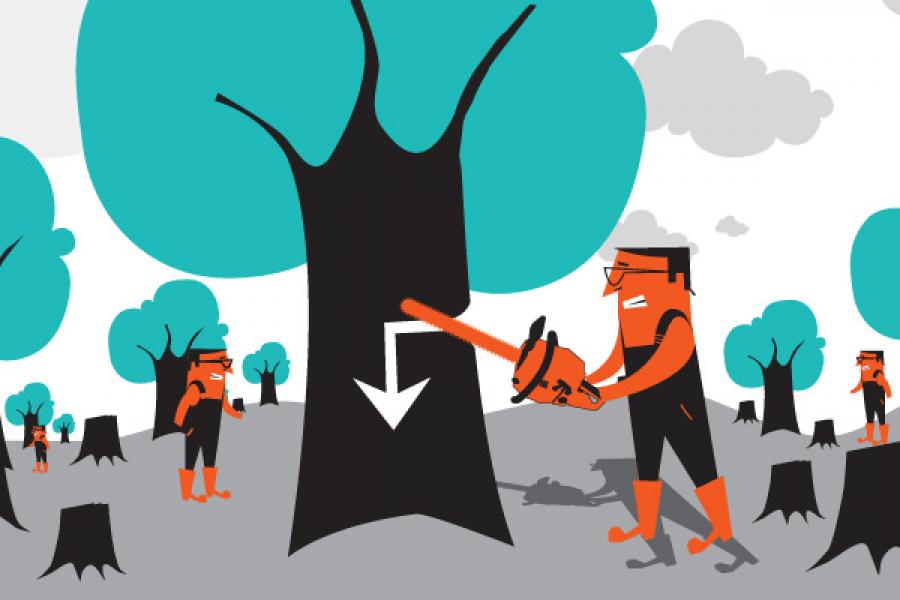
Forests Are Still Vanishing, But At A Slower Rate
Forests around the world are still getting wiped out. But the pace of the carnage has slowed
Last decade we lost 5.2 million hectares, but that’s lower than the 8.3 million hectares that we lost in the previous decade
Africa
Africa accounts for 17 percent of the world’s forest area. In countries like Sudan, net forest loss decreased from 590,000 hectares per year to 41,000 hectares per year. It is believed that the data collected before this was from questionable sources.
Asia
Asia lost 0.7 million hectares per year in the 1990s. Through the 1990s and 2000s, China increased its forest area by 2 million hectares and 3 million hectares respectively per decade. This has boosted Asia’s forest cover to show an increase of 1.4 million hectares per year for 2000-2010.
Europe
Europe was the only continent to have a significant net increase of 0.36 percent (excluding Russia) in forest area from 1990 to 2010. The countries that had the largest increase in forest area were Iceland and the Republic of Moldova. This is due to a combination of efforts to plant forests and an increase in natural expansion of forests into agricultural land.
North America
North America has a marginal increase in forest areas by 0.03 percent; however, it has the highest percentage of forest area dedicated to conservation of biological diversity at 15 percent, over the world average of 12 percent. Moreover, the US has the highest percentage in the world of forest area dedicated to conservation of biological diversity at 25 percent.
Latin America & Caribbean
Countries in South America, which include Argentina, Bolivia, Brazil, Chile, Colombia, Ecuador, Falkland Islands, and many more, have seen the biggest decrease in forest cover. Since 1990, it has reduced from 946 million hectares to 864 million hectares. Rapid urbanisation and conversion of land for agricultural purpose are the main reasons for the decrease.
(Coordinated by Nilofer D’Souza)
Source: State of World’s Forests 2011, Food and Agriculture Organisation of the United Nations
(This story appears in the 13 April, 2012 issue of Forbes India. To visit our Archives, click here.)















